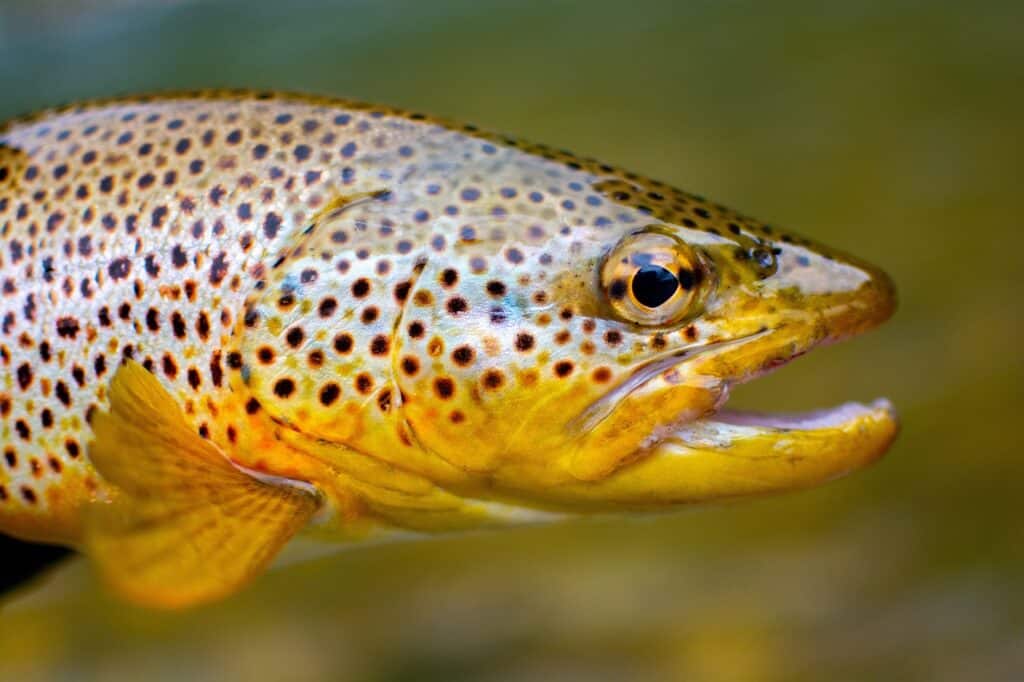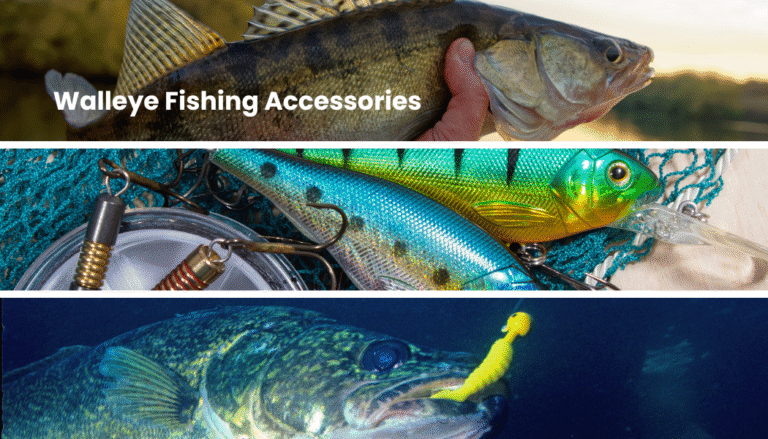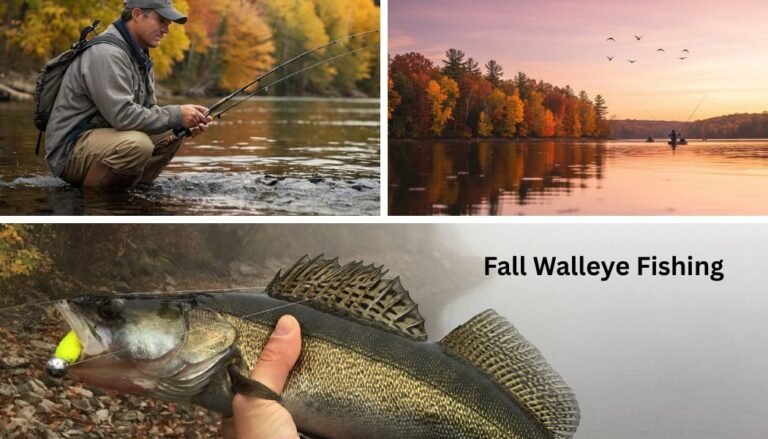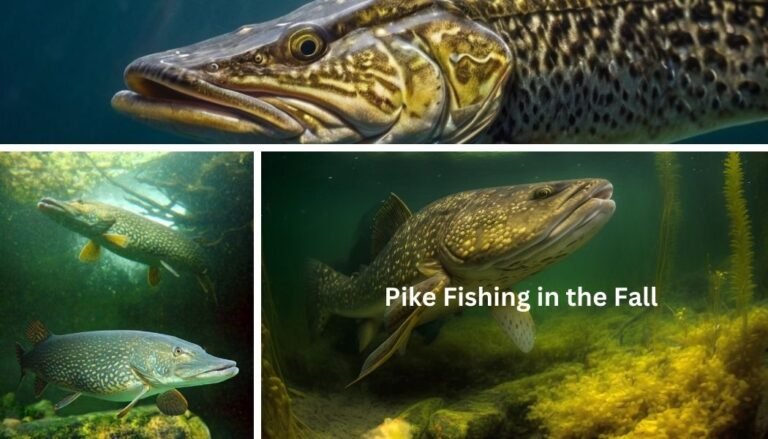The Challenge of Trout Fishing
Trout fishing isn’t just a pastime; it’s a passion that merges the serenity of nature with the thrill of the catch. This comprehensive guide seeks to equip both novice and experienced anglers with the techniques and knowledge necessary to excel in trout fishing. Whether you’re standing knee-deep in a crystal-clear mountain stream or casting from the banks of a tranquil lake, understanding the nuances of trout behavior and the subtleties of various fishing methods will significantly enhance your success and enjoyment.
As we delve into this guide, we will explore the fascinating world of trout species, uncover the secrets of their behavior, and detail essential and advanced fishing techniques. Alongside, we’ll review the necessary equipment and emphasize the importance of conservation. Let’s embark on this journey to become adept at trout fishing, ensuring every cast is a step closer to mastering this timeless sport.
Overview of Trout Species
Rainbow Trout
Rainbow trout (Oncorhynchus mykiss) are popular among anglers due to their vibrant coloration and fighting spirit. They exhibit a distinctive pinkish-red stripe along their sides, which intensifies during spawning. Native to the Pacific Ocean’s cold-water tributaries in Asia and North America, rainbow trout thrive in clear, well-oxygenated streams and lakes. They are adaptable and have been introduced worldwide, often outcompeting native species. Rainbow trout feed on various aquatic insects, crustaceans, and small fish, making them a versatile target for various fishing techniques.
Brown Trout
Brown trout (Salmo trutta) are known for their wariness and the challenge they present to anglers. Originally from Europe, they have been successfully introduced to many parts of the world. Brown trout prefer cooler waters with ample cover, such as undercut banks and submerged structures. Their diet is diverse, including insects, crustaceans, and small fish, making them opportunistic feeders. This adaptability to different food sources and environments allows brown trout to grow to impressive sizes, often exceeding 20 pounds in ideal conditions.
Brook Trout
Brook trout (Salvelinus fontinalis), also known as speckled trout, are native to eastern North America. They are typically found in small, cold, clear streams and lakes. Recognizable by their distinctive marbled pattern of light spots on a dark background and vivid red belly, brook trout are a sign of pristine water conditions. Brook trout have a diet consisting primarily of aquatic insects, small fish, and crustaceans. Their sensitivity to environmental changes makes them an important indicator species for water quality.
Cutthroat Trout
Cutthroat trout (Oncorhynchus clarkii) are named for the characteristic red or orange slash marks under their lower jaws. Native to the western United States, they are highly adaptable and inhabit a range of environments, from coastal streams to high mountain lakes. Cutthroat trout are aggressive feeders, consuming insects, crustaceans, and small fish. This aggressiveness, combined with their varied habitat preferences, makes them a favored target for anglers seeking diverse fishing experiences. Cutthroat trout populations vary widely in size and coloration, often influenced by their specific habitat and diet.
Bull Trout
Bull trout (Salvelinus confluentus), native to North America, are striking fish known for their vibrant coloration and distinct appearance. Their bodies are typically olive-green to brown, adorned with scattered spots of red, orange, and yellow along their sides, leading to their nickname “Dolly Varden trout” in some regions. These fish thrive in cold, clear waters of rivers and lakes, preferring swift currents where they can hunt for their primary prey on smaller fish and insects. Bull trout are notable for their size, with some individuals reaching over 30 inches in length and weighing several pounds.
Despite their impressive size, they are considered a threatened species due to overfishing, habitat loss, and competition with non-native species. Efforts are being made to conserve and restore their natural habitats. It is essential for ensuring the survival of these iconic freshwater fish.
Understanding these trout species’ unique characteristics and behaviors is crucial for successful fishing. Tailoring your techniques and equipment to match their preferences can significantly enhance your chances of a rewarding catch.
Understanding Trout Behavior
Habitat Preferences
Trout thrive in cold, clean, well-oxygenated water. Their habitat preferences are determined by factors such as water temperature, flow rate, and available cover.
Rainbow Trout
Rainbow trout favor faster-moving, clear streams and rivers with abundant oxygen. They often occupy riffles and runs where the water is well-oxygenated, and food is plentiful. They also thrive in cold, deep lakes, particularly those with significant inflow and outflow.

Brown Trout
Brown trout prefer cooler, slower-moving waters. They are commonly found in deep pools, undercut banks, and areas with substantial cover, such as rocks and submerged logs. Brown trout are more tolerant of warmer water than other trout species, which allows them to inhabit a wider range of environments.
Brook Trout
Brook trout are customarily found in small, cold, clear streams and ponds. They prefer environments with dense overhead cover and plenty of hiding spots. Brook trout require highly oxygenated water and are often found in mountain streams and spring-fed creeks.
Cutthroat Trout
Cutthroat trout inhabit a diverse range of environments, from coastal streams to high alpine lakes. They favor clear, cold waters with moderate flow and abundant cover. Coastal cutthroat can tolerate brackish water, while inland populations are often found in remote mountain streams and lakes.
Bull Trout
Bull trout are highly dependent on cold, clean, and well-oxygenated water habitats throughout their native range in North America. They are commonly found in rivers, streams, and lakes at higher elevations, where water temperatures remain cool year-round. These fish prefer areas with complex underwater structures such as deep pools, undercut banks, and rocky substrate, which provide cover and refuge from predators.
Feeding Patterns
Trout feeding patterns are influenced by seasonal changes, water conditions, and food availability.
Rainbow Trout
Rainbow trout primarily feed on aquatic insects, such as mayflies, caddisflies, and stoneflies. They are also opportunistic feeders, consuming small fish, crustaceans, and terrestrial insects. Their feeding activity peaks during insect hatches, which can vary seasonally and daily. Early morning and late evening are often the most active feeding times, especially in clear water conditions.
Brown Trout
Brown trout have a varied diet that includes insects, crustaceans, and small fish. Larger brown trout often become piscivorous, preying on smaller fish and even small mammals. They tend to feed more actively during low-light conditions, such as dawn, dusk, and overcast days. Brown trout are known to be selective feeders, often keying in on specific prey items based on availability and abundance.

Brook Trout
Brook trout feed on a wide range of prey, including aquatic and terrestrial insects, small fish, and crustaceans. They are most active during cooler parts of the day, particularly in the morning and evening. In their pristine, cold-water habitats, brook trout often rely on a steady supply of insects and invertebrates, making fly matching crucial for successful fishing.
Cutthroat Trout
Cutthroat trout are aggressive feeders, consuming a variety of insects, crustaceans, and small fish. Their feeding habits can vary significantly based on their habitat. Coastal cutthroats often feed on both freshwater and marine prey, while inland cutthroats focus more on aquatic insects and small fish. They are particularly active during insect hatches and tend to feed more aggressively in moving water where food is abundant.
Bull Trout
Bull trout are carnivorous predators with a diverse diet that varies depending on their life stage and the availability of prey in their habitat. As juveniles, they primarily feed on aquatic insects, small crustaceans, and smaller fish species. As they grow larger, bull trout become more piscivorous (fish-eating), preying on a wide range of fish species, including smaller trout, whitefish, and even other bull trout. They are opportunistic feeders, often targeting prey that is abundant and easily obtained in their environment.
Their feeding behavior is influenced by water temperature, seasonal changes, and the availability of their food sources. In rivers and streams, bull trout typically ambush their prey from cover, using their agility and strong jaws to capture and consume their meals. Overall, their role as apex predators in freshwater ecosystems underscores their importance in maintaining balanced fish populations and healthy aquatic habitats.
Seasonal Movements
Trout exhibit distinct seasonal movements driven by changes in water temperature, spawning cycles, and food availability.
Rainbow Trout
Rainbow trout typically move to deeper, cooler waters during the summer to avoid warm temperatures. In spring and fall, they migrate to shallower areas for spawning and increased feeding activity. These seasonal movements are crucial for maintaining their health and reproductive success.
Brown Trout
Brown trout move to deeper pools and undercut banks during the warmer months to stay cool and avoid predators. In the fall, they migrate upstream to spawn in gravelly streams and rivers. This migration often involves significant travel, with brown trout returning to their natal streams to reproduce.
Brook Trout
Brook trout seek out cold, spring-fed streams and shaded areas during the summer to maintain their preferred temperature range. They spawn in the fall, often moving to smaller tributaries with clean gravel beds. This seasonal movement ensures optimal conditions for egg incubation and fry survival.
Cutthroat Trout
Cutthroat trout exhibit a variety of migratory behaviors depending on their specific subspecies and habitat. Coastal cutthroat may move between freshwater and brackish environments, while inland cutthroat often migrate to headwaters for spawning. These movements are closely tied to spawning cycles and the search for optimal feeding and breeding conditions.
Bull Trout
Seasonal movements of bull trout are closely tied to their reproductive cycle and environmental conditions. During the spring and early summer months, bull trout often migrate upstream to spawn in clean, cold, and well-oxygenated waters. They typically select gravel-bottomed areas in streams or rivers where females dig redds (nests) for their eggs. After spawning, some individuals may migrate downstream to larger rivers or lakes where they can find deeper and cooler waters during the summer months.
This movement helps them avoid high water temperatures that can stress the fish. In the fall and winter, bull trout may move to deeper pools or overwintering areas where temperatures remain stable and suitable for their survival. These seasonal movements are critical for their life cycle, ensuring reproductive success and providing access to optimal feeding and overwintering habitats. Environmental factors such as water temperature and flow play significant roles in guiding these movements throughout the year.

Essential Trout Fishing Techniques
Fly Fishing
Fly Selection
Selecting the right fly is crucial in fly fishing. Match the hatch by observing the local insect activity and choosing flies that closely mimic the natural prey of the trout. Dry flies mimic insects on the water’s surface, nymphs imitate underwater larvae, and streamers represent small fish or leeches. Carry a variety of patterns and sizes to adapt to changing conditions and trout preferences.
Casting Techniques
Mastering various casting techniques is essential for accurate and effective fly presentation. The overhead cast is fundamental for distance and accuracy, while the roll cast is useful in tight spaces with limited backcasting room. The sidearm cast helps avoid obstacles and can be beneficial in windy conditions. Practicing these techniques improves your ability to place the fly precisely where trout are feeding.
Presentation and Drifts
A natural presentation is key to enticing trout. Dead drifting, where the fly moves naturally with the current, is highly effective for imitating natural prey. Adding subtle twitches or mending the line to adjust the fly’s drift can mimic the behavior of struggling insects or baitfish. Understanding the water flow and positioning yourself correctly on the water will enhance your ability to present the fly convincingly.
Spin Fishing
Lure Selection
Choosing the right lure is vital in spin fishing. Spinners, spoons, and soft plastics each have unique actions that attract trout. Spinners create vibrations and flash, spoons mimic the erratic movements of wounded fish, and soft plastics can resemble various prey items. Matching the lure to the water conditions and trout species increases your chances of a strike.
Casting Techniques
Accurate casting places your lure where trout are likely to be holding. The sidearm cast is effective for avoiding obstacles and achieving low, accurate casts. The flip cast allows for precise placement in tight quarters. Practicing different casting methods helps you adapt to various environments and improves your overall success.
Retrieving Methods
The retrieval technique can make a significant difference in attracting trout. A steady retrieve works well with spinners and spoons, while a stop-and-go method can trigger strikes from following fish. Adding occasional jerks or twitches can mimic the movement of distressed prey. Observing trout behavior and adjusting your retrieve accordingly will enhance your effectiveness.
Bait Fishing
Types of Bait
Natural baits, such as worms, grubs, minnows, and insects, are highly effective for trout. Artificial baits like PowerBait are also popular, especially in stocked waters. Choosing the right bait depends on the trout’s diet and the specific body of water you’re fishing.
Rigging Methods
Proper rigging ensures that your bait is presented naturally and remains attractive to trout. The Carolina rig is useful for keeping the bait near the bottom, while I prefer the pickerel/ crappie rig, which allows for a more subtle presentation and puts the bait just above the bottom. Using a slip bobber is another one of my favorites, as it can help keep the bait at the desired depth. Adjusting your rig based on water conditions and trout behavior improves your success.
- Made in China
- Product Type :FISHING HOOK
- Package Dimension :10.921 cm x 7.111 cm x 1.27 cm
Presentation Strategies
Presenting bait naturally is crucial for enticing trout. Drift fishing allows the bait to move naturally with the current, while bottom bouncing keeps the bait in the strike zone. Using a float can help maintain a lifelike presentation at the correct depth. Understanding the water flow and the trout’s behavior allows you to adjust your presentation for optimal results.
Each of these techniques requires practice and adaptation to specific conditions, but mastering them will significantly increase your trout fishing success.
Advanced Tactics for Targeting Trophy Trout
Reading Water
Identifying Trout Holding Areas
Understanding where trout are likely to hold is essential for successful fishing. Trout prefer specific areas in a stream or river that offer food, oxygen, and protection.
Riffles: Riffles are shallow sections of a stream with fast-moving, turbulent water. They are rich in oxygen and often abundant with food, making them prime feeding areas for trout. Look for riffles with cobble or gravel substrates where aquatic insects thrive.
Runs: Runs are deeper than riffles and have a moderate flow. Trout often hold in runs because they provide both cover and a steady supply of food. Target runs with varying depths and water velocities, as trout will position themselves in these areas to conserve energy while feeding.
Pools: Pools are deeper, slower-moving sections of water. Trout use pools as resting areas, particularly during warmer parts of the day or when water levels are low. Focus on pools with structure, such as submerged logs, rocks, or overhanging banks, which offer additional cover and ambush points for feeding.
Undercut Banks: Undercut banks provide excellent cover and protection from predators. Trout often position themselves under these banks to stay out of the main current while remaining close to potential food sources. Approach these areas carefully to avoid spooking the fish.
Observing Surface Activity
Surface activity provides valuable clues about trout behavior and feeding patterns.
Rising Fish: Look for rising fish, which indicate that trout are feeding on surface insects. The type of rise can help determine what they are eating. Gentle sips suggest small insects, while splashy rises indicate larger prey items.
Insect Hatches: Observe the water for hatching insects. During a hatch, trout focus on the emerging insects, often ignoring other food sources. Identifying the type of insect hatching helps you select the appropriate fly or lure.
Swirling Water: Swirling water or boils can indicate trout feeding just below the surface. These disturbances are often caused by trout taking emerging insects or chasing baitfish.
Analyzing Water Flow and Structure
Water flow and structure significantly influence trout behavior and positioning.
Current Seams: Current seams form where fast and slow water meet. Trout position themselves along these seams to take advantage of the slower water for resting while being close to the faster water that delivers food. Cast your fly or lure along these seams to maximize your chances of a strike.
Eddies: Eddies are areas where the current reverses direction, often found behind large rocks or other obstructions. These areas trap food and provide a resting spot for trout. Target the slack water in the eddy and the edges where the current transitions.
Depth Variations: Depth variations create prime trout habitats. Trout often hold at the bottom of drop-offs or ledges, where they can ambush prey from below. Focus on these depth changes, particularly where deep water transitions to shallower areas.
Cover: Trout uses various types of cover to hide from predators and ambush prey. These include submerged rocks, logs, aquatic vegetation, and overhanging branches. Identify these structures and present your fly or lure close to the cover, as trout will likely be nearby.
Reading the water correctly allows you to identify the most promising fishing spots and adapt your techniques to match the conditions. This skill is essential for consistent success in trout fishing.
Adapting to Weather Conditions
Weather significantly impacts trout behavior. Overcast days often lead to more active feeding, while bright sunlight can make trout more cautious and drive them to seek cover. Adapting your tactics to the prevailing weather conditions, such as using stealthier approaches on sunny days, increases your chances of success.
Night Fishing Techniques
Night fishing for trout can be incredibly rewarding, especially during the warmer months when trout are more active after dark. Using glow-in-the-dark lures, fishing near lighted areas, and focusing on quieter presentations can help attract trout in low-light conditions. Use a light-up slip bobber with bait, as trout have a good sense of smell and will easily locate your bait.
Required Equipment for Trout Fishing
Rods and Reels
Selecting the right rod and reel is fundamental for trout fishing. A light to medium-light rod with a sensitive tip allows for precise casting and detecting subtle bites. Pairing it with a high-quality reel with a smooth drag system ensures you can handle both small and large trout effectively. Fly fishing a 5 to 7-weight rod.
Lines and Leaders
Choosing the right line and leader is essential for successful trout fishing. A light monofilament or fluorocarbon line in the 2-6 pound test range is ideal for most situations. Leaders should be matched to the line and the conditions, with tapered leaders being useful for fly fishing to ensure a delicate presentation.
Flies and Lures
A well-stocked fly box with a variety of patterns and sizes is crucial for fly fishing. For spin fishing, having an assortment of lures, including spinners, spoons, and soft plastics, allows you to adapt to different conditions and trout preferences.
Waders and Clothing
Proper wading gear, including chest waders and wading boots, allows you to access prime fishing spots while staying dry and comfortable. Clothing should be weather-appropriate, with layers to adjust to changing conditions and colors that blend with the environment to avoid spooking the trout.
Accessories and Gadgets
Essential accessories include a landing net, forceps, a line clipper, and a waterproof bag for storing gear. Gadgets like a fish finder, polarized sunglasses, and a headlamp for night fishing can enhance your overall fishing experience and increase your success rate.
Conservation and Ethical Fishing Practices
Catch and Release
Practicing catch and release helps sustain trout populations and ensures that future generations can enjoy the sport. Use barbless hooks, handle trout with wet hands, and release them quickly and gently to minimize stress and injury.
Minimizing Environmental Impact
Respecting the environment is crucial for preserving trout habitats. Avoid littering, stay on designated paths to prevent erosion, and be mindful of wildlife. Using biodegradable baits and environmentally friendly tackle reduces your impact on the ecosystem.
Supporting Conservation Efforts
Supporting organizations and initiatives that focus on trout conservation helps protect and restore critical habitats. Participating in local conservation projects, such as stream cleanups or habitat restoration efforts, contributes to the long-term health of trout populations and their environments.
Mastering the Art of Trout Fishing
Trout fishing is a dynamic and rewarding pursuit that requires a blend of knowledge, skill, and patience. By understanding trout behavior, mastering various fishing techniques, and using the right equipment, you can enhance your angling success and fully appreciate the beauty of this timeless sport. Remember to practice ethical fishing and conservation to ensure that trout fishing remains a cherished activity for generations to come.
Frequently Asked Questions (FAQ)
What is the best time of day to fish for trout?
The best times are typically early morning and late evening when trout are most active. However, this can vary with seasons and weather conditions.
How can I practice catch and release effectively?
Use barbless hooks, handle trout with wet hands, and release them quickly and gently to minimize stress and injury and ensure the fish’s survival.
What are the most effective lures for trout fishing?
Spinners, spoons, and soft plastics are all effective. Fly fishing with dry flies, nymphs, and streamers can also be highly productive, depending on the conditions and trout species.
How do I choose the right fly for fly fishing?
Match the hatch by observing local insect activity and selecting flies that mimic the natural prey of the trout in your fishing area.
What should I wear for trout fishing?
Wear weather-appropriate clothing in natural colors to avoid spooking trout. Chest waders and wading boots are essential for accessing various fishing spots safely.
Disclaimer: This blog post contains affiliate links





